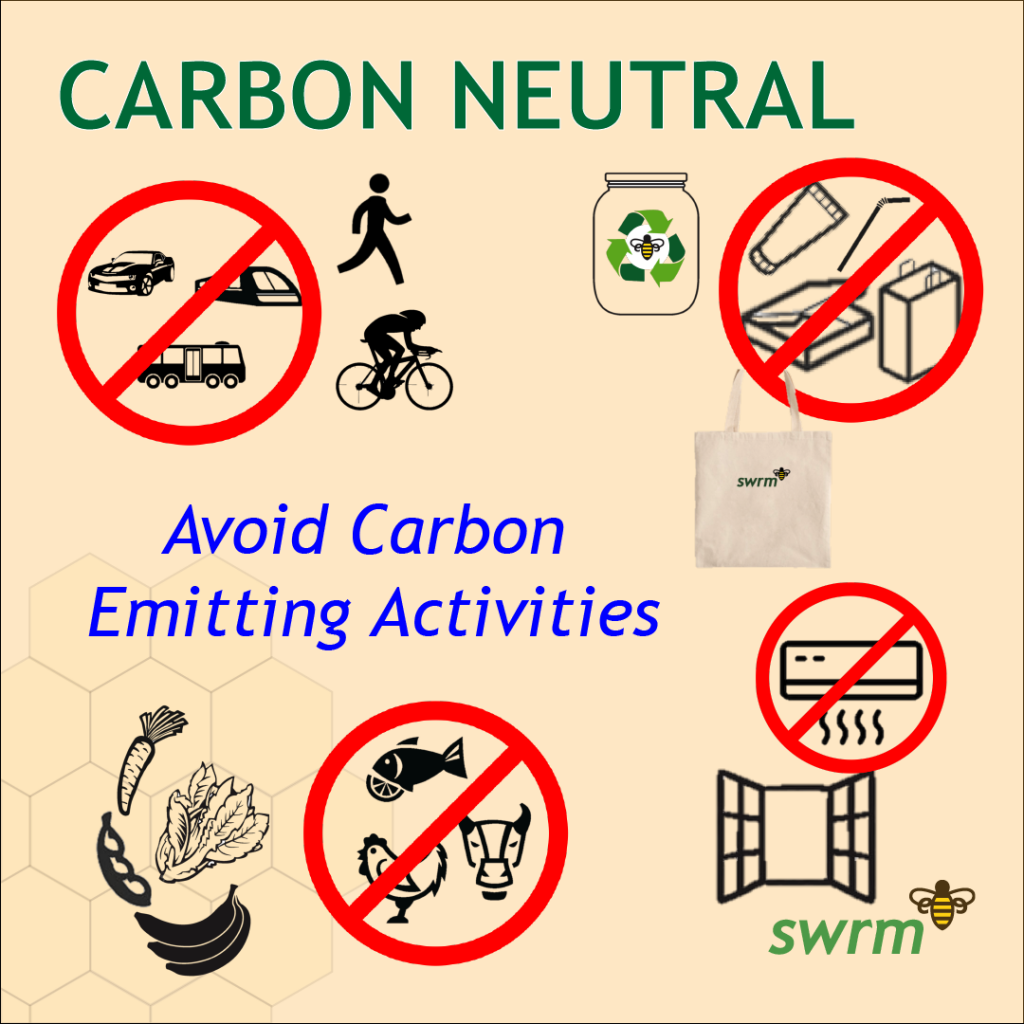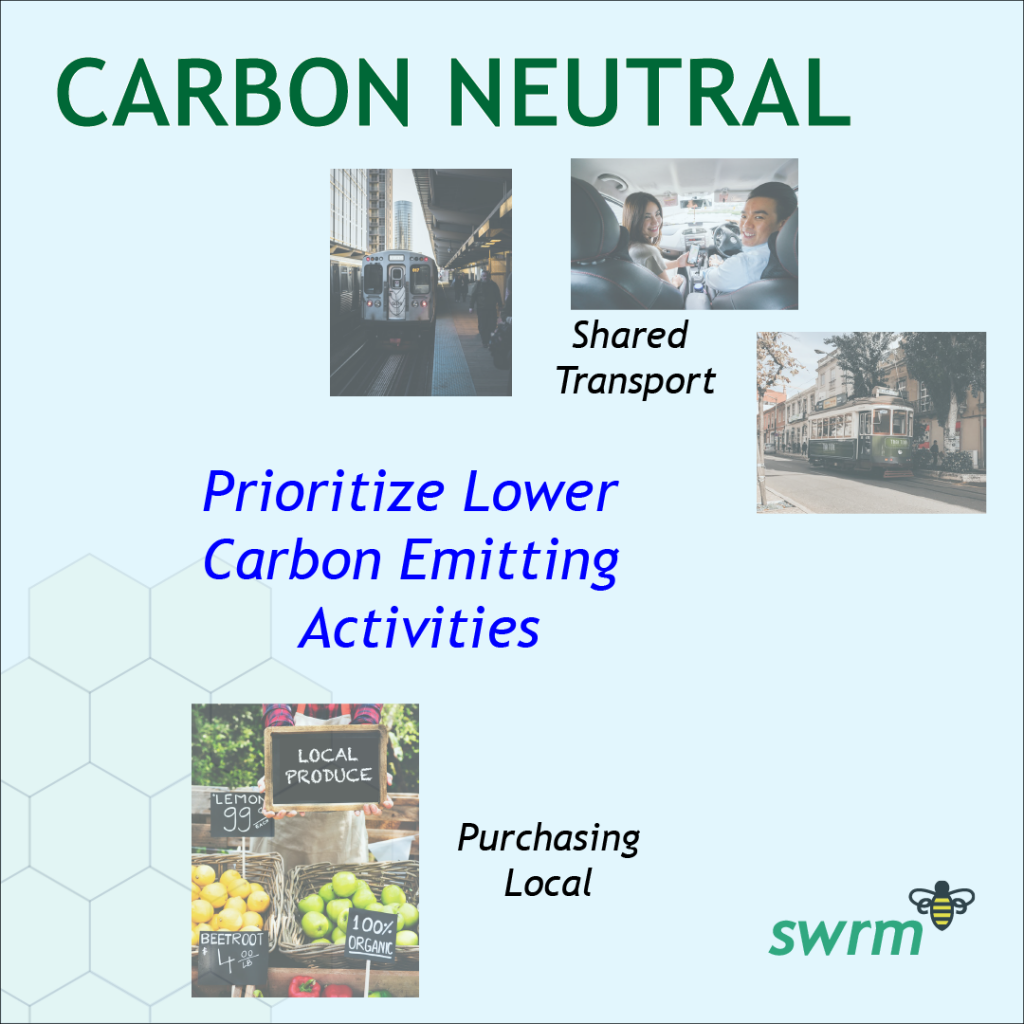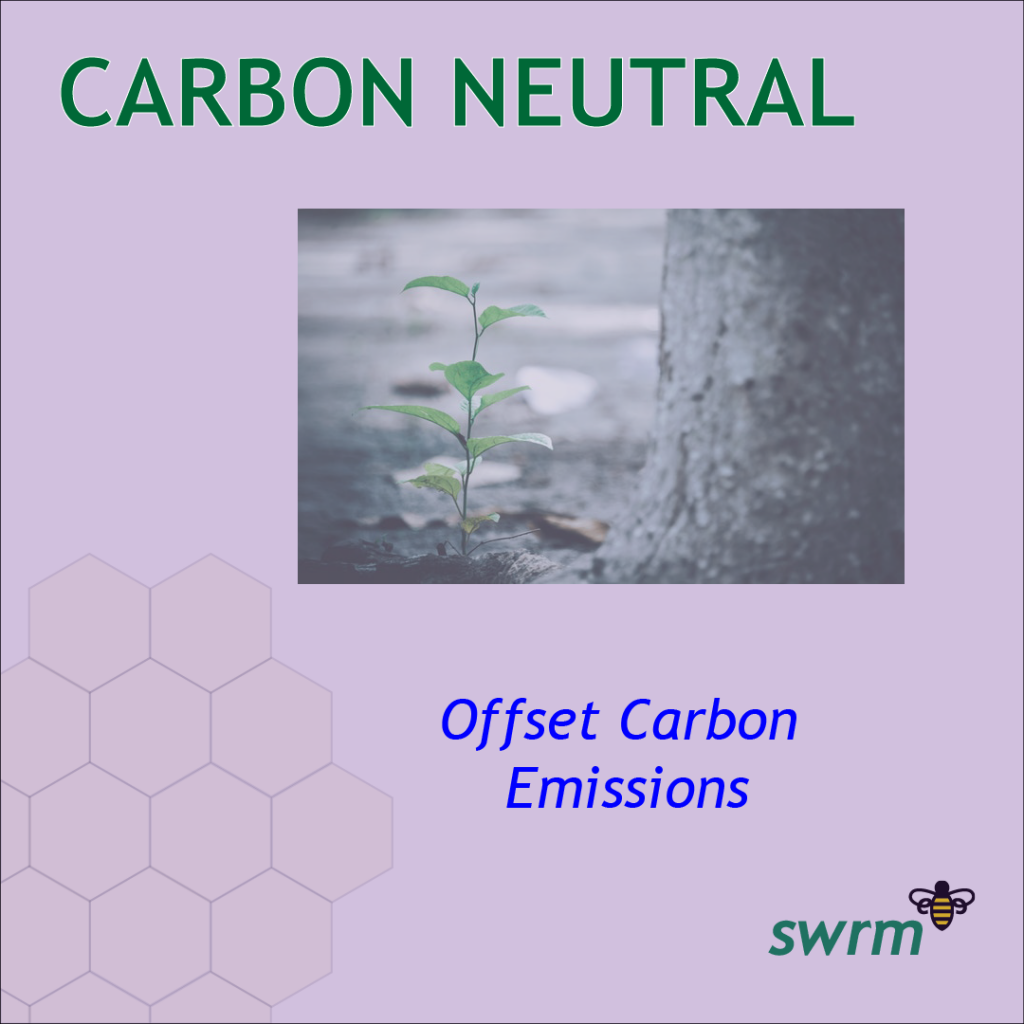
Our journey to sustainability is full of challenges, excitement, stumbles and successes. Not everyone follows the same path but the goal is the same: to become Carbon Neutral. There are several variations on the definition, but essentially a net zero carbon footprint, refers to achieving net zero carbon dioxide emissions through balancing carbon emissions with carbon removal, or simply eliminating carbon emissions altogether.
There are several resources of carbon sinks that collect the CO2 emissions of all life: Oceans, Plants & Trees, and Geological Formations & Soils. We know roughly how much carbon these sinks can sequester and how much carbon non-anthropogenic life creates, which leaves us the remaining sink to be shared equally among humans.
So how can we live Carbon Neutral?
#1 Avoid Carbon Emitting Activities

Transport: Can you walk or cycle instead of driving, riding a train, bus or subway? Do you actually need to travel anywhere?
Eating: Have you removed meat, fish and poultry from your diet? Is the produce you consume in season and locally sourced?
Home: Do you avoid using A/C, heating or your oven? Have you switched off your water boiler? Have you switched to Solar?
Shopping: Are you purchasing package free items? Are you only shopping at stores that have sustainable policies?
#2 Substitute higher carbon emitting activities with lower ones

Transport: Commuting via bus, train or subway over any vehicle. Car pooling in a high MPG vehicle so all seats are filled.
Eating: Ensuring any food you purchase is local, organic / grass fed and sustainably sourced. Smaller portions of meat, fish and poultry.
Home: Reducing your bathing time to minimize water use. Bulk cooking your meals that can be reheated for later meals.
Shopping: Using online shopping that is sustainable (no packaging, reusable bags). Purchasing sustainable brands.
#3 As a last resort: offset carbon-emitting activities.

With current infrastructure it is almost impossible to live below the sustainable limit (we say almost because here at swrm we have only managed to do this for 4 of 8 months this year). As a last resort you can offset your carbon footprint, however be aware that Carbon Offsetting is not considered a sustainable practice. The best way to make sure that your efforts are actually going to help offset your carbon footprint is to plant the trees yourself. A growing tree will sequester a maximum of 10lbs of CO2 in a year – but remember if you are planting from a seed, it will likely sequester only 5% of that. If you are purchasing from a carbon offset company, ensure that you research the projects they invest in thoroughly.
Many of us do not have unlimited funds to change our current situation, to buy an electric vehicle, purchase a home solar system, or buy the often higher priced sustainably sourced groceries. Living the most sustainable lifestyle that you can is a challenge in itself but more sustainable options are continually developed. Don’t get discouraged. You have our support!




